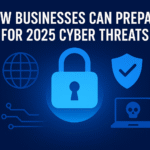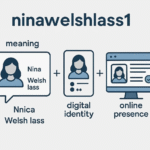Introduction
The year 2025 is bringing major conversations about post-quantum cryptography (PQC). As quantum computers continue to evolve, traditional encryption methods like RSA and ECC are at risk of becoming obsolete. Businesses, governments, and cybersecurity experts are now preparing for the next big leap in digital security: encryption that can withstand quantum attacks.
This guide explains what post-quantum cryptography is, why it matters in 2025, and how organizations can get ready for the coming changes.
Main Types of PQC Algorithms
These rely on different “hard problems” than RSA or ECC. Common families include:
| Category | Hard Problem | Examples (NIST finalists) |
|---|---|---|
| Lattice-based | Shortest Vector Problem (SVP), Learning With Errors (LWE) | Kyber (KEM), Dilithium (signature) |
| Code-based | Decoding random linear codes | Classic McEliece |
| Multivariate | Solving multivariate polynomial equations | Rainbow (deprecated due to broken security) |
| Hash-based | Security of cryptographic hash functions | SPHINCS+ (stateless hash-based signatures) |
What Is Post-Quantum Cryptography?
Post-quantum cryptography refers to cryptographic algorithms designed to remain secure even when attackers use powerful quantum computers. Unlike classical computers, quantum machines can perform certain calculations at speeds that could break today’s encryption methods in minutes.
The main goal of PQC is to protect sensitive data—like banking transactions, health records, and government communications—from being decrypted by quantum technology in the future.
Why 2025 Is a Turning Point
2025 is considered a crucial year because:
- Research is maturing: PQC algorithms are now being standardized by organizations like NIST (National Institute of Standards and Technology).
- Businesses must prepare: Data encrypted today could still be stored and later decrypted by quantum computers in the future.
- Global adoption is beginning: Companies in finance, defense, and cloud services are already testing PQC systems.
The Risks of Quantum Computing to Current Security
Traditional cryptography relies on problems that are hard for classical computers to solve, like factoring large numbers. Quantum computers, however, use algorithms such as Shor’s Algorithm that could solve these problems much faster. This means:
- RSA encryption could be broken.
- ECC (Elliptic Curve Cryptography) may become useless.
- Long-term data confidentiality is at serious risk.
Post-Quantum Cryptography Solutions
Several families of algorithms are being tested and standardized as quantum-safe options:
- Lattice-based cryptography – Currently one of the most promising approaches.
- Hash-based cryptography – Useful for digital signatures.
- Code-based cryptography – A strong candidate for long-term encryption.
- Multivariate cryptography – Another possible alternative under study.
These methods are being designed to replace or complement today’s encryption systems.
How Businesses Can Prepare in 2025
To get ready for the shift, businesses should:
- Audit current cryptography systems – Identify where classical encryption is being used.
- Adopt hybrid solutions – Combine classical and PQC methods for stronger security.
- Follow NIST standards – Align with official recommendations for post-quantum algorithms.
- Plan migration early – Transitioning to new cryptography can take years, so planning in 2025 is critical.
The Role of Governments and Standards Bodies
Governments worldwide are working to speed up PQC adoption. For example:
- The U.S. NIST project is finalizing PQC standards by 2025.
- The European Union Agency for Cybersecurity (ENISA) is supporting awareness programs.
- National defense agencies are already testing quantum-safe solutions for military-grade data.
Challenges in Implementation
While promising, PQC also faces challenges:
- Performance issues: Some algorithms are slower than current methods.
- Integration costs: Businesses may face high expenses updating infrastructure.
- Compatibility: Existing software and hardware must be upgraded to support PQC.
TL;DR (2025 Edition)
| Topic | Status in 2025 |
|---|---|
| Quantum threat | Not immediate, but serious long-term risk |
| PQC algorithms | Standardization nearly complete (via NIST) |
| Deployment | Early stages (browsers, VPNs, testbeds) |
| Industry push | Governments and big tech leading the way |
| What you should do | Prepare systems for crypto agility |
Looking Ahead Beyond 2025
By the late 2020s, experts expect PQC to become a standard part of cybersecurity infrastructure. Quantum-safe encryption will be as common as SSL/TLS certificates are today. Companies that prepare early in 2025 will avoid costly last-minute transitions later.
Conclusion
Post-quantum cryptography is not just a buzzword—it’s a vital part of the future of cybersecurity. In 2025, as standardization moves forward, businesses and governments must take action to secure sensitive data before quantum computers pose a real-world threat.
The sooner organizations adapt, the better prepared they will be to face the quantum era.



